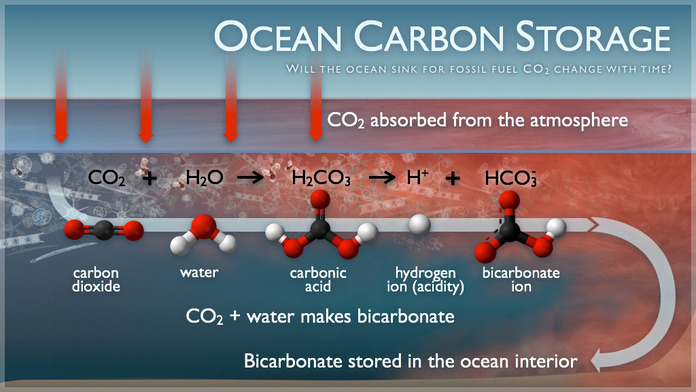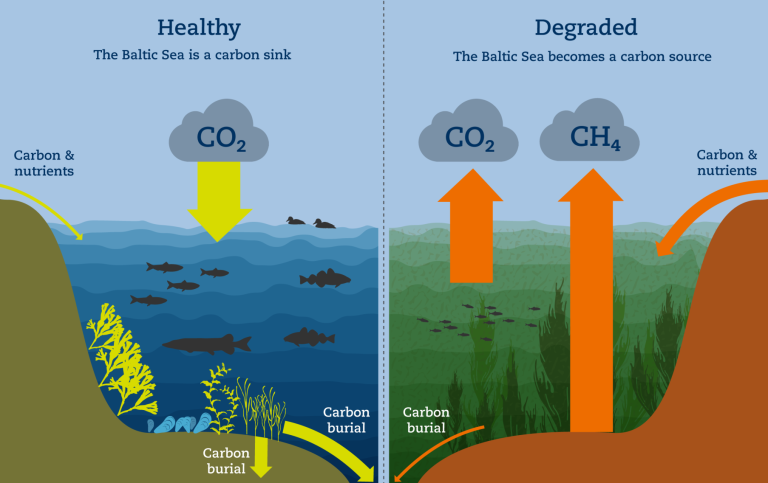During the summer months, eastern Mediterranean waters get heated up in ways that it begins releasing carbon-di-oxide by exhibiting no ability to absorb it any further.
A Geoscientist explains how this can happen in unimaginably large waters: “If you leave it in your car for a while and try to open it, all the gasses are going to pop out at once, because when it warms, the capacity of the fluid to hold CO2 goes down.”
It remains a fact that the upper layers of surface water get utterly warmed while the lower portions of the Sea remain cooled because of no sunlight penetrating inside and also upwelling.
Is it all lost in bubbles, where is the rest of released carbon?
Along with these bubbles, the released carbon also leads to formation of another entity altogether: the Aragonite crystals, which are increasingly been recorded in the sediment traps.
Aragonite is a naturally-occurring form of calcium carbonate (the others being ‘calcite’ and ‘vaterite’), which is formed out of certain biological as well as physical processes in aquatic environments and are used by creatures like snails, corals to build their shells.
That is good right? Well, unfortunately No!
Except in the Eastern Mediterranean waters, the increasing heat has abiotically formed these crystals with an extra carbon load. How has remained a question for now, only left to speculations, as per a few.
Just like the formation of clouds, they need a nuclei upon which these crystals can place their base like maybe particles of dust coming off from the nearby land or our everlasting buddy, microplastics.
“They could probably form around any nucleation center. I suspect that microplastics may also be a possible one. But as scientists love to say, more research is needed”, one of the Researchers explains.
The problem is that as these crystals begin to form, more CO2 gets released that, as per a few researchers involved in the study, is around 15 percent of the total emissions made by the Mediterranean Sea in its surrounding atmosphere.
Do we still think the emissions made only affect the local atmosphere? No, the mystic planet called Earth has its own ways to balance heat and settle the scores.
With the continuous warming of the sea, more CO2 will be lost, from the waters effervescing carbon as well as crystals, but this also makes the water less acidic as the dissolved CO2 reacts with water to form a weak carbonic acid.
The above anomaly in the waters makes it rather basic, reversing the prevalent trend of acidification. In the normal scenario, we can assume it to benefit the calcifiers, right but, like just another defeat, it is not so. The heat stresses are difficult to relate to.
“Many of them have specific temperature ranges in which they can build their shells—not too hot, not too cold”.
Unfortunately, a similar scenario was observed by NASA under their Arctic-Boreal Vulnerability Experiment (ABoVE) program where they found bubbling lakes in the Arctic.
What is Next or Now: Migration?
Despite the Herculean efforts, it has been a difficult task to assess how will the biodiversity respond and evolve with a superfast changing climate.
The issue is that this evolution is bound to happen over decades, centuries and millennia that cannot be captured by our scientific community, leaving it onto the fossils study to envisage a hidden past and learn what can happen to relative climate changes.
An analysis made on one of the plankton species’ fossils found in the Atlantic Ocean that survived the Ice age, conducted by the University of Bremen and the University of Oldenburg, has captured the changes leading to novel changes in the specie.
They saw that after the global cooling Ice age as the world drifted towards the global warming phase, several species began moving to the higher latitudes.
“It has long been known that species assemblages change when their environment changes. For instance, when ocean temperatures rise, species migrate to higher latitudes. We can also observe this migration to higher latitudes in our data from the North Atlantic. But the amazing thing is that the ‘native’ species have not migrated at the same rate.”
It is worth noting how the corals find it hard to survive in the disturbed waters and other Atlantic species are found more commonly in the Arctic than ever.
And what’s happening in the permafrost refuge?
A study has recently pointed out that the planet’s permafrost contained in the Arctic is melting and will probably soon begin releasing carbon dioxide and methane directly into the atmosphere in amounts equivalent to a large industrial nation, even more than whatever the United States has released since the industrial revolution.
In other words, if climate change is not arrested now, the Arctic alone will alone emit 232 Pg of carbon by this century, with at least one-fifth of current tightly held ‘permafrost country’ being vulnerable to rapid thawing.
The Lead Author adds: “We hope that these forecasts of future Arctic carbon emissions not only update the scientific picture but act as new guide rails for policymakers who are working to stabilize the climate and avoid exceeding temperature targets.”
“Once permafrost carbon emissions increase in response to climate warming as some models predict, there won’t be a way for us to stop that process. We may need to reduce our fossil fuel emissions much sooner than currently planned by many governments to avoid triggering possible tipping points in Earth’s climate.”



